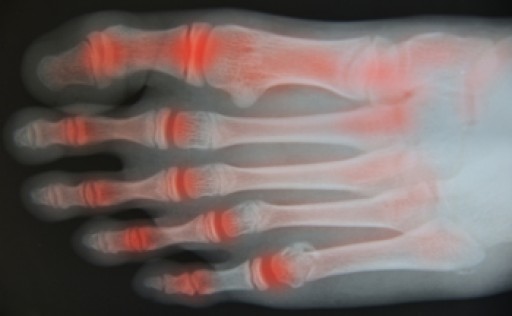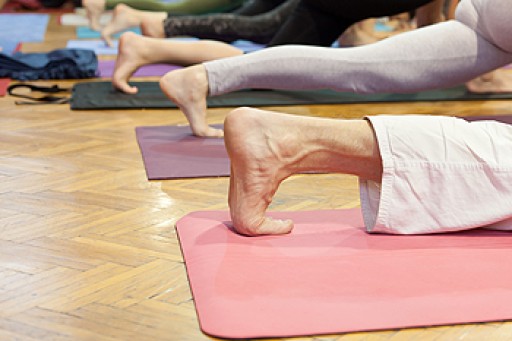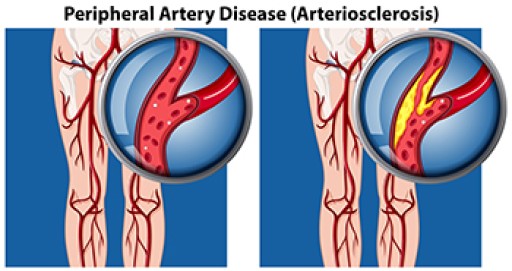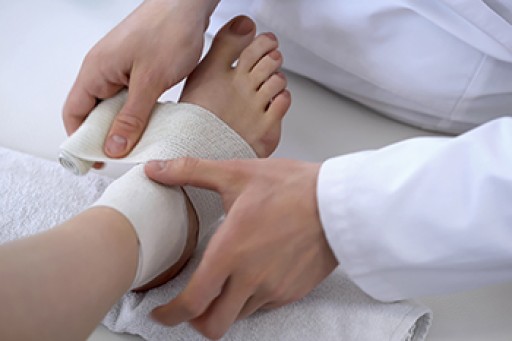 Osteoarthritis is a common joint disease that is caused by degeneration of cartilage, a layer of tissue that lines the ends of bones and helps them move smoothly. When the cartilage is worn away, the bones begin to rub directly against each other as they move, leading to pain, swelling, and joint stiffness. Osteoarthritis often affects the joints in the feet and ankles. In addition to the symptoms of arthritis itself, this condition can also cause other foot problems, such as bunions, hallux rigidus, and corns and calluses. Osteoarthritis is associated with aging and tends to affect people over age 45. People who are overweight or obese, have a family history of osteoarthritis, or have a medical history of rheumatoid arthritis or gout are most at risk. If you are experiencing symptoms of osteoarthritis in your feet or ankles, please consult with a podiatrist.
Osteoarthritis is a common joint disease that is caused by degeneration of cartilage, a layer of tissue that lines the ends of bones and helps them move smoothly. When the cartilage is worn away, the bones begin to rub directly against each other as they move, leading to pain, swelling, and joint stiffness. Osteoarthritis often affects the joints in the feet and ankles. In addition to the symptoms of arthritis itself, this condition can also cause other foot problems, such as bunions, hallux rigidus, and corns and calluses. Osteoarthritis is associated with aging and tends to affect people over age 45. People who are overweight or obese, have a family history of osteoarthritis, or have a medical history of rheumatoid arthritis or gout are most at risk. If you are experiencing symptoms of osteoarthritis in your feet or ankles, please consult with a podiatrist.
Arthritis can be a difficult condition to live with. If you are seeking treatment, contact one of our podiatrists from Illinois . Our doctors can provide the care you need to keep you pain-free and on your feet.
Arthritic Foot Care
Arthritis is a term that is commonly used to describe joint pain. The condition itself can occur to anyone of any age, race, or gender, and there are over 100 types of it. Nevertheless, arthritis is more commonly found in women compared to men, and it is also more prevalent in those who are overweight. The causes of arthritis vary depending on which type of arthritis you have. Osteoarthritis for example, is often caused by injury, while rheumatoid arthritis is caused by a misdirected immune system.
Symptoms
- Swelling
- Pain
- Stiffness
- Decreased Range of Motion
Arthritic symptoms range in severity, and they may come and go. Some symptoms stay the same for several years but could potentially get worse with time. Severe cases of arthritis can prevent its sufferers from performing daily activities and make walking difficult.
Risk Factors
- Occupation – Occupations requiring repetitive knee movements have been linked to osteoarthritis
- Obesity – Excess weight can contribute to osteoarthritis development
- Infection – Microbial agents can infect the joints and trigger arthritis
- Joint Injuries – Damage to joints may lead to osteoarthritis
- Age – Risk increases with age
- Gender –Most types are more common in women
- Genetics – Arthritis can be hereditary
If you suspect your arthritis is affecting your feet, it is crucial that you see a podiatrist immediately. Your doctor will be able to address your specific case and help you decide which treatment method is best for you.
If you have any questions, please feel free to contact our offices located in Wheeling and Berwyn, IL . We offer the newest diagnostic and treatment technologies for all your foot care needs.












